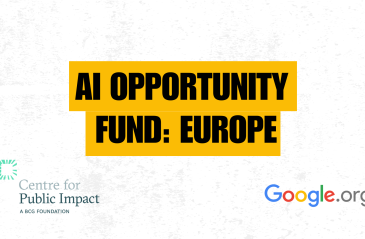
The power of storytelling in climate leadership

President Obama used his final budget proposal to Congress to support the use of evidence
Share articleThe Obama Administration backs greater efforts to determine what works and what doesn't
Share articleThe final Obama budget recommended a variety of investments in people and analytic tools
Share articleWe put our vision for government into practice through learning partner projects that align with our values and help reimagine government so that it works for everyone.
President Obama's final budget proposal to Congress for the US government's fiscal year 2017 put a stake in the ground for his long-running agenda to inject the use of data and evidence into budget, policy and operational decisions.
The guiding principle behind this agenda has been: “Where evidence is strong, we should act on it. Where evidence is indicative, we should consider it. Where evidence is weak, we should build the knowledge to support better decisions in the future.”
Building on the original agenda, his fiscal 2017 budget shows some real traction and forward momentum. Below are a few examples that give a flavour of the scale and scope of this long-running initiative. The budget proposal included a rich array of examples of programmes where research and strong evidence have led to efforts to restructure or scale up several initiatives.
This included expanding access to quality childcare for working families. The budget proposed $82 billion in additional funding over the next decade to expand childcare for 1.1 million additional children under the age of four by 2026. Research shows that quality childcare during this critical stage of development yields long-lasting benefits for low-income children when they start school - and helps their parents succeed in the workforce.
There was also a recommendation to expand apprenticeship programmes. Rigorous quasi-experimental analyses found that apprenticeship programme participants have substantially better employment prospects and earnings than comparable non-participants. With this in mind, the budget provided an additional $2 billion to scale up these programmes.
The budget also supported increases in evaluation efforts that provide the evidence to determine what works - so programmes can be scaled up, revised, or shut down. Take the funding of early education research and evaluation, for example. The US Department of Education's Early Learning Research Network is mapping out the key factors associated with children's school readiness as they move from preschool to elementary school.
The US Department of Health and Human Services is also looking at testing innovative childcare models. It is proposing to spend $40 million in competitive pilots to help states and localities to develop models for the kind of care that low-income families need most.
And the budget nearly doubles, to $700 million, the amount of grant funding that is based on ‘tiered-evidence' programmes - programmes where smaller investments are made for proof of concept models, which lead to a ‘validation' tier and finally to a ‘scale up' tier. This approach increases the chances that funds will be targeted at programmes that work - in education, international development aid, teen pregnancy programmes, and ‘pay for success' innovation initiatives.
The evidence initiative doesn't just focus on programmes and data, however. The budget noted: “it is essential that federal agencies develop the capacity to credibly build and use evidence”. To develop this capacity, the budget recommends a variety of investments in people and analytic tools, such as making education information more readily available. The Department of Education's College Scorecard initiative resulted in a number of lessons learned on how to make information available and actionable. The department plans to apply these lessons to other initiatives in early childhood and adult education, pulling together diverse arrays of data and studies on targeted topics.
The budget also proposes a statewide Human Services Data System grant programme to enable state governments to “develop data systems from a family-centred - rather than programme-specific - perspective”. This would allow states to better use existing data to learn what works, but it would also improve the programme participant experience and reduce red tape.
And there are also proposals to make additional federal data available for policy development, programme evaluation, performance measurement and transparency efforts, by tweaking or revising existing legal and administrative requirements. This would be done within a privacy and security framework.
How many of these initiatives will survive the congressional budget process is unknown, but the breadth and scale of the many initiatives already under way certainly lays down a foundation upon which a future president might build.











